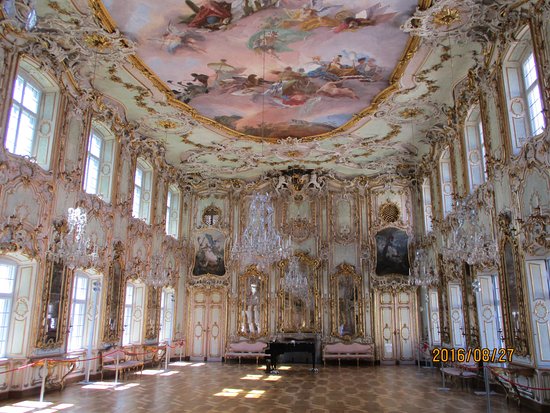
noun
- a style of architecture and decoration, originating in France about 1720, evolved from Baroque types and distinguished by its elegant refinement in using different materials for a delicate overall effect and by its ornament of shellwork, foliage, etc.
- a homophonic musical style of the middle 18th century, marked by a generally superficial elegance and charm and by the use of elaborate ornamentation and stereotyped devices.
adjective
- (initial capital letter) Fine Arts.
- noting or pertaining to a style of painting developed simultaneously with the rococo in architecture and decoration, characterized chiefly by smallness of scale, delicacy of color, freedom of brushwork, and the selection of playful subjects as thematic material.
- designating a corresponding style of sculpture, chiefly characterized by diminutiveness of Baroque forms and playfulness of theme.
- of, pertaining to, in the manner of, or suggested by rococo architecture, decoration, or music or the general atmosphere and spirit of the rococo: rococo charm.
- ornate or florid in speech, literary style, etc.
noun (often capital)
- a style of architecture and decoration that originated in France in the early 18th century, characterized by elaborate but graceful, light, ornamentation, often containing asymmetrical motifs
- an 18th-century style of music characterized by petite prettiness, a decline in the use of counterpoint, and extreme use of ornamentation
- any florid or excessively ornamental style
adjective
- denoting, being in, or relating to the rococo
- florid or excessively elaborate
1836, “old-fashioned,” from French rococo (19c.), apparently a humorous alteration of rocaille “shellwork, pebble-work” from Middle French roche “rock,” from Vulgar Latin *rocca “stone.” Specifically of furniture or architecture of the time of Louis Quatorze and Louis Quinze, from 1841. If this is correct, the reference is to the excessive use of shell designs in this lavish style. For differentiation, see baroque. The general sense of “tastelessly florid or ornate” is from 1844.
Much of the painting, engraving, porcelain-work, etc., of the time has … a real decorative charm, though not of a very high order in art. Hence rococo is used attributively in contempt to note anything feebly pretentious and tasteless in art or literature. [Century Dictionary, 1902]
A style of baroque art and architecture popular in Europe during the eighteenth century, characterized by flowing lines and elaborate decoration.
 Liberal Dictionary English Dictionary
Liberal Dictionary English Dictionary